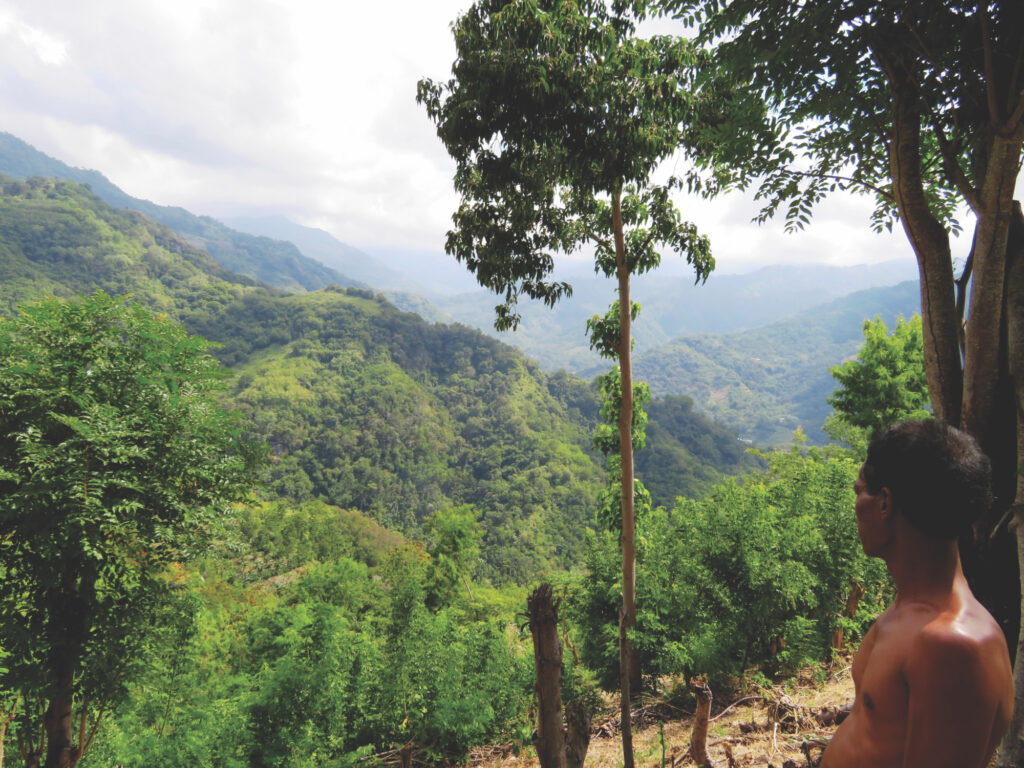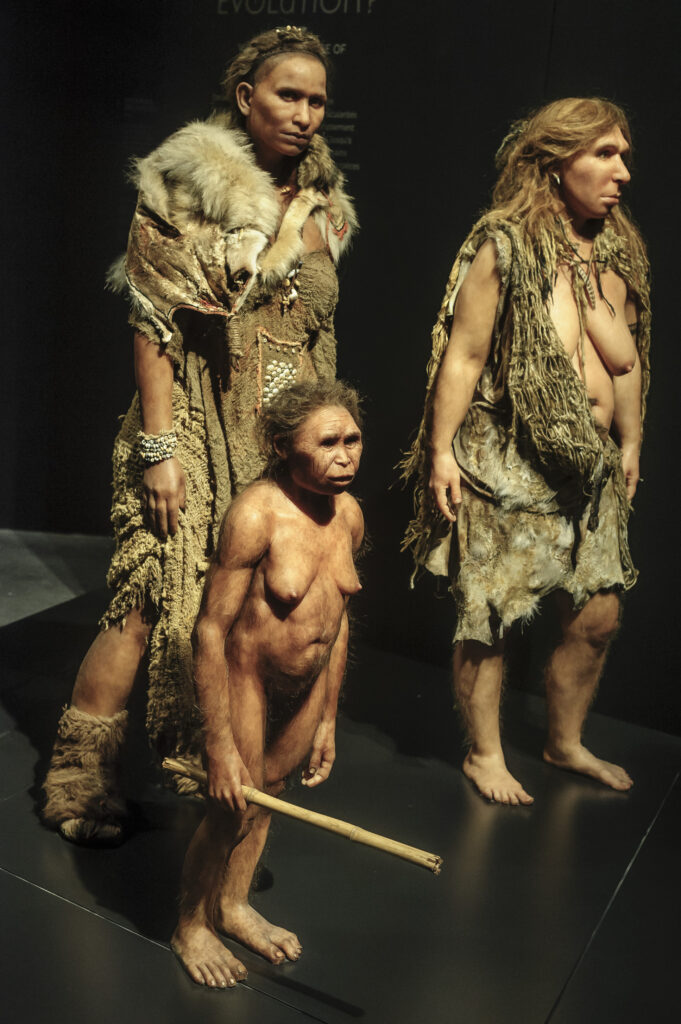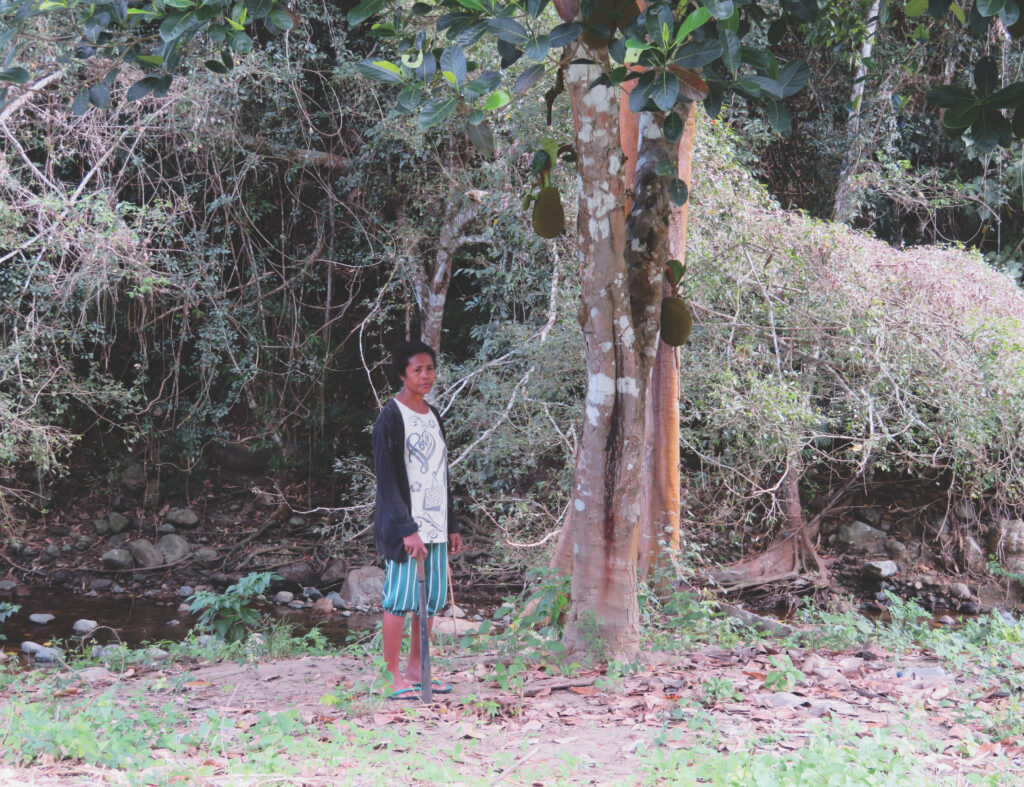On Flores Island, Do “Ape-Men” Still Exist?

Excerpted from Between Ape and Human: An Anthropologist on the Trail of a Hidden Hominoid by Gregory Forth. Pegasus Books, 2022. All rights reserved.
During ethnographic fieldwork on the Indonesian island of Flores between 1984 and 2003, I recorded local accounts of small-bodied, ape-like humans who reportedly lived on the island. When the discovery of the fossil hominin Homo floresiensis was announced in 2004, I was taken aback by the remarkable resemblance between the locally described “ape-men” and paleoanthropological reconstructions of the late Pleistocene fossils. Exploring how this correspondence might be explained, I continued my investigations during 10 subsequent field trips between 2005 and 2018. The result is my 2022 book. The following excerpted essay is from the book’s first chapter.
In the far reaches of the Indonesian archipelago lies Flores Island, a long, narrow land of high mountains, precipitous cliffs, and deep ravines. The island is home to some remarkable creatures, including the Flores giant rat, a tree-dwelling beast that can grow 70 centimeters nose-to-tail. Also found on Flores is the world’s largest lizard, the Komodo dragon, a venomous carnivore that can attain a length of more than 3 meters.
In ancient times, Flores Island once had the now-extinct pygmy Stegodon, elephant-like creatures no larger than a cow. But my concern is with an even more remarkable and even less expected animal—or perhaps two animals of very similar kinds.
One is an extremely small-bodied fossil human named Homo floresiensis, known from remains found in 2003 at Liang Bua in western Flores. Standing little more than a meter tall—the height of a 2–3-year-old child—the tiny species quickly became nicknamed “the hobbit,” after the J.R.R. Tolkien characters.
Paleoanthropologists described the hobbit’s skeletal features as “archaic,” comparable in some ways to australopiths who lived 2–4 million years ago. Yet H. floresiensis lived as recently as 50,000 years ago.
The other humanlike creature, which for convenience I call “ape-man,” has yet to be scientifically identified. [1] [1] After much deliberation, I’ve decided to use “ape-man” as an English translation for what the Lio call lai ho’a. In contemporary English, the name is problematic because it excludes women and nonbinary people. Historically, “ape-man” has been a widely known English term for a creature combining features of a physical modern human and an ape. This concept most closely matches Lio conceptions of lai ho’a. I assure readers that Lio “ape-men” include females as well as males. But one group that populates Flores Island, a people called Lio, claims these creatures are alive—if not well—in isolated sections of their mountainous territory.
In their own language, the Lio name these ape-men lai ho’a. They describe them as small—in fact, about the same size as H. floresiensis—upright walking and hairy. Individual Lio offer credible accounts of lai ho’a they have seen, including eyewitness encounters dating from the 1960s to the 2010s.
Archaeological dates suggest H. floresiensis had been living on the island since around 100,000 years ago. The species’ ancestors may have arrived much earlier. But because dates are available only from a single site, when H. floresiensis disappeared—or even if it disappeared—is not known.
There’s reason to believe Flores Island ape-men could be present-day descendants of H. floresiensis. If so, it could mean that this species still shares Flores Island with modern humans. On the other hand, the humanlike creatures Lio speak of could be purely imaginary. Which solution is best supported by the evidence is what interests me.
Living some 300–400 kilometers east of the site where H. floresiensis was discovered, Lio occupy one of the island’s most mountainous regions—rugged country by any standard.
Not long ago, Lio people mainly practiced slash-and-burn (or swidden) cultivation. In highland gardens carved out of mountain forests, they planted maize, rice, millet, and other cereals, and a variety of vegetables and tubers. In the 1930s and 1940s, part of the population began cultivating rice in permanent irrigated fields located in lower-lying places. About the same time, some Lio also abandoned highland villages to build settlements nearer to paddy fields.
Even so, many farmers still plant highland gardens and reside at higher elevations, often a considerable distance from roads and other modern institutions. During the 20th-century, Lio forests shrank due to human activities. Yet the highest mountains remain covered in jungle. It is mainly in these regions that the Lio say people, very occasionally, encounter ape-men.
The Flores Island ape-man is a figure I’ve reconstructed from the statements of numerous Lio people.
I’ve never seen an ape-man, and partly for this reason some readers may want to dismiss any resemblance between these creatures and apparently long-extinct hominins as mere coincidence. One purpose of my research is to question such dismissal.
I can immediately discount the possibility that the ape-man simply reflects local familiarity with the scientific discovery and reconstruction of H. floresiensis. I was lucky. I first recorded physical descriptions of the Lio ape-man in July 2003. That was over two months before paleoanthropologists came across the remains of H. floresiensis in September of 2003 and well over a year before the discovery was announced to the public. Even after that time, very few Flores Islanders learned much about the discovery.
This doesn’t mean ape-men exist as flesh-and-blood creatures—as opposed to imaginary beings existing only in people’s minds. But actually demonstrating that ape-men are imaginary is no easy task. One might attempt to show that the thing’s existence contradicts the laws of physics or principles of biological evolution.
To be sure, some Lio reports do defy basic science. Fantastic claims assert ape-men can “disappear” or even “fly.” Yet many Lio accounts adhere to a thoroughly naturalistic depiction. If such realistically represented things do not exist, there remains the question of why people think they do—indeed, why some give seemingly credible accounts of ape-man sightings.
My studies on Flores Island have been broadly ethnographic, meaning that I investigate how people organize their social and spiritual lives, what they believe, and what they consider valid knowledge. Like all ethnographers, I’ve pursued this research by living with local people over long periods of time and conversing with them in languages in which they are fluent.
My first stint of fieldwork on Flores Island was in 1984. Since then, I’ve returned to Flores 19 times, typically spending two to three months in the field.
As an anthropologist, I’m fully aware that verbal evidence of any kind can be fabricated, exaggerated, or simply mistaken. I’m mainly talking, of course, about statements by people who claim to have seen Flores Island ape-men.
Yet one can evaluate putative sightings by considering the physical setting and people’s descriptions (do they sound like another animal—a monkey, say—or a tree stump or rock, or indeed, something dreamt?). One can also assess the personality, character, and social status of witnesses, including what interest they may have in representing something in a particular way.
For this reason, I place less reliance on accounts by people of a supernatural bent, most notably dealers in magically powerful ape-men body parts or substances and “people of power” (ata bhisa) or “people of skill (or knowledge)” (ata mbe’o). [2] [2] I was allowed to inspect only a few such things but was unable to positively identify them as hominin parts. One bone fragment proved to belong to a macaque skull. These people serve as spiritual healers, magicians, and sorcerers. They might have a personal—one might also say a professional—interest in claiming experience of things unfamiliar to others.
The most valuable ape-men reports are those where two or more people claimed to have seen the same thing simultaneously; I recorded several such accounts. But even in these instances, all witnesses could have been mistaken or misremembered what they saw.
How can I be sure anything I heard reflects a natural creature corresponding to a scientifically unknown species? The short answer is I can’t. Even so, several considerations reduce my uncertainty—and may do the same for readers.
I begin with deliberate deception. Researchers can find dishonest individuals in any field setting. There are ways of identifying people, with reference to personal traits, social position, and interests, who are inclined to deceive or exaggerate (such as the aforementioned sorcerers).
But there are also reasons to believe that much of what people tell any anthropologist is accurate—at least in people’s honest understanding. Most of what people said about Flores Island ape-men agreed with what others said. And where accounts diverged, it was usually possible to find a reason why.
Also, deception and fabrication require effort. It’s far easier for people to tell the truth (as they see it) or simply say they don’t know—surely, the best way to get rid of a troublesome anthropologist. Not only that, fabrication requires a motive.
Sometimes, people may tell mistruths to convey what they think an inquirer wants to hear. But it’s unclear why Lio might have thought I was soliciting naturalistic depictions of ape-men. It’s more likely that some people were inclined to stress supernatural aspects. For people knew I was also interested in such things as local spirits, witches, and magical beliefs and practices.
Mistruths might be told to pull someone’s leg. A person in the U.S. or Canada might tell someone they’d seen Bigfoot to fool them. But this wouldn’t work among the Lio. For Lio regard their ape-men as real although rare animals, whose existence no one disputes. A North American parallel might be telling a person you’d seen, say, a wolverine, an animal even experienced outdoorspeople rarely encounter in the wild; even if the claim was false, it would hardly constitute leg-pulling.
Lio were familiar with ape-men long before the arrival of missionaries or other agents of colonialism. What’s more, secondary-school curricula have little if anything to say about paleoanthropology or human evolution. So far as I could discover, textbooks—or, for that matter, any of the few books that are locally available—do not include illustrations of non–Homo sapiens human ancestors.
Educated Florenese Catholics, including Indonesian priests, are openly critical of Darwinian evolution, and ordinary Lio villagers are barely aware of it. Their Indigenous cosmology contains nothing comparable to a view of present-day humans or animals having gradually evolved from physically different ancestors.
There’s no reason to suppose that their view of Flores Island ape-men has in any way been shaped by the discovery of H. floresiensis. Having no stake in and little knowledge of paleoanthropology, Lio would have no reason to doubt that a small bipedal animal combining features of humans and apes could exist in their territory.
For Lio, Flores Island ape-men are part of the local environment as much as any other rare creature, such as Komodo dragons. Unlike Bigfoot believers, no Lio ever goes looking for ape-men. Lio have no motive—financial, social, or otherwise—for finding an ape-man specimen. And because they are barely aware of outside scientific views—or any view that claims such creatures do not exist—they have no ideological interest in proving any “scientific establishment” wrong.
As this should suggest, Lio are also less biased than scientists who reject the possibility of non–H. sapiens bipedal apes surviving to the present. Some academics and nonacademics dismiss any knowledge of the natural world that has not received the seal of scientific approval.
But these skeptics should wonder why Lio think Flores Island ape-men exist. They ought to give the Lio people a fair hearing. I have, in part because of the arrestingly naturalistic way people describe lai ho’a.
If accepted as plausible accounts of real creatures, what Lio say presents a challenge to biology and paleoanthropology. If not, another challenge arises: to explain why people subscribe to the empirical existence of entities with little or no basis in observable reality.




































